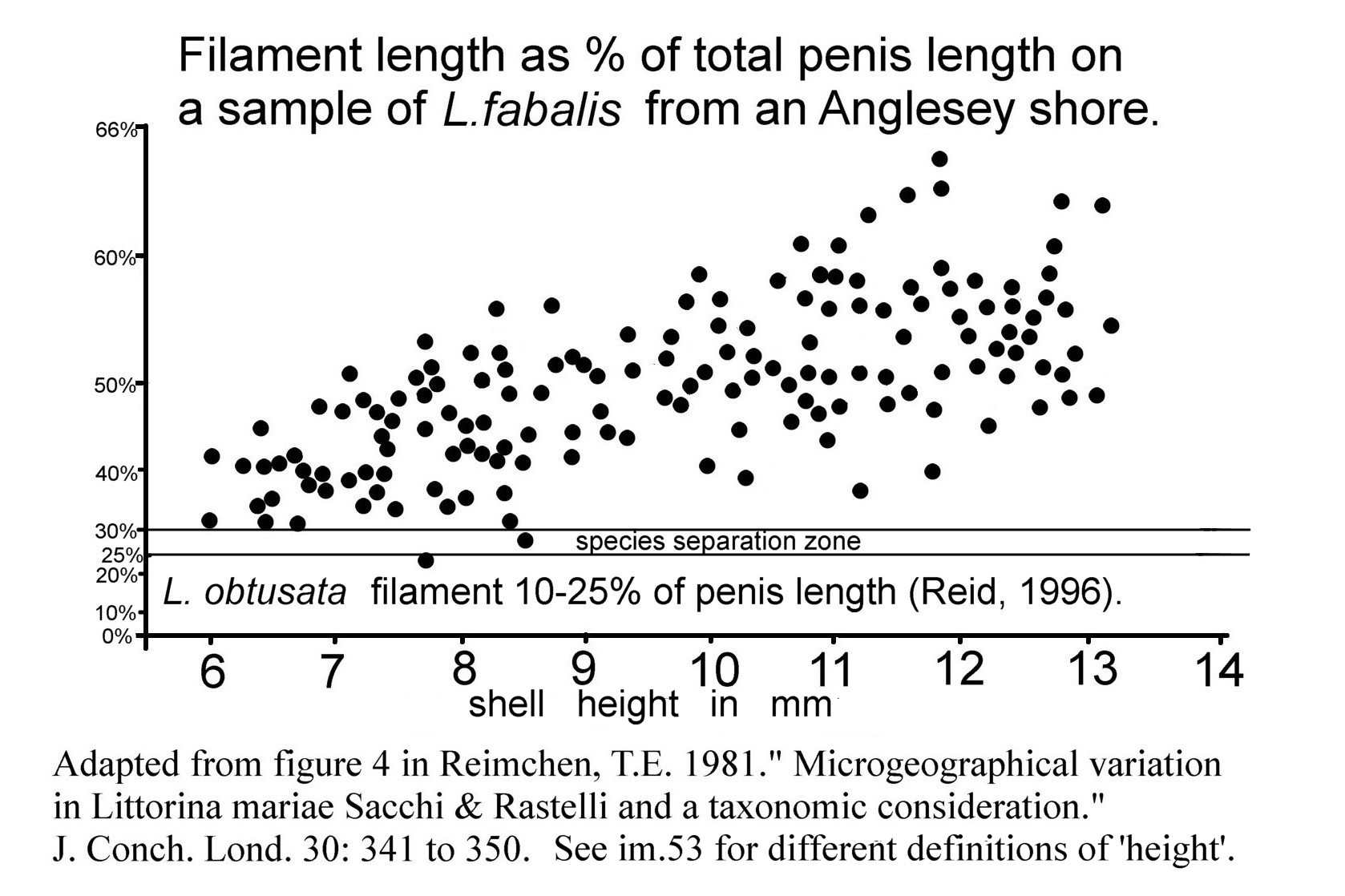Scatter graph of relative filament lengths on sample of L. fabalis from an Anglesey shore.Despite considerable intraspecific variation, this graph shows adherance of L. fabalis specimens to the accepted limits of filament length, 30% to over 60% of penis length, and clear separation from L. obtusata , filament 10% to 25% of penis length (Reid, 1996). Only one specimen of L. fabalis fell into the L. obtusata zone of the graph, and only one was in the usual break between the species.
Because of variation on any live individual (see 5aDof 05a Differentiation L. obtusata/L. fabalis and 5bDof 05b Differentiation L. obtusata/L. fabalis ), precise measurements of the penis are difficult, but Reimchen’s graph of dead specimens shows that small specimens most often had a filament length 30% to 40% of total penis length, while large specimens had proportionally longer filaments usually over 50%, and often over 60%, of penis length.
Reimchen’s sample was of two distinct (size and colour) phenotypes from the same shore that he thought might be of taxonomic significance, but when he combined their penis dimensions on this graph he found “a continuous gradation was present between small and large snails” [which] “may represent allometric growth”.
When used with number, size and positioning of mamilliform glands on the penis, the relative size of the filament is a most reliable diagnostic feature.
Reimchen equated “maximum diameter” with “shell height”. This differs from the definition of height in this account. See glossary and image 53Dof 53 Differentiation L. obtusata/L. fabalis .
Full account at: 02 Differentiation L. obtusata/L. fabalis
06 Differentiation L. obtusata/L. fabalis

